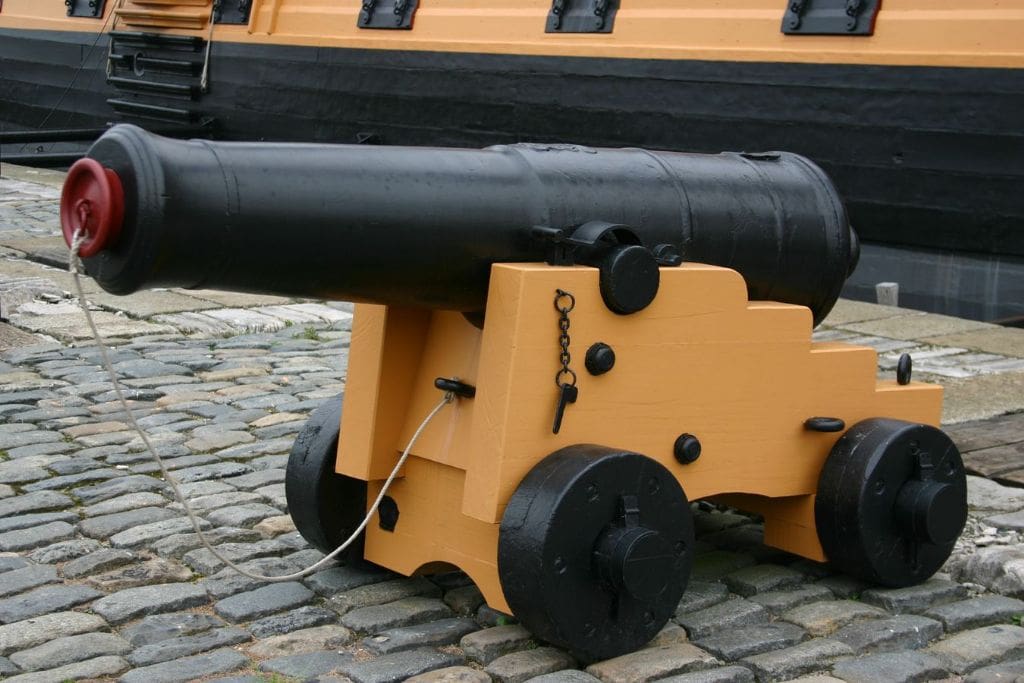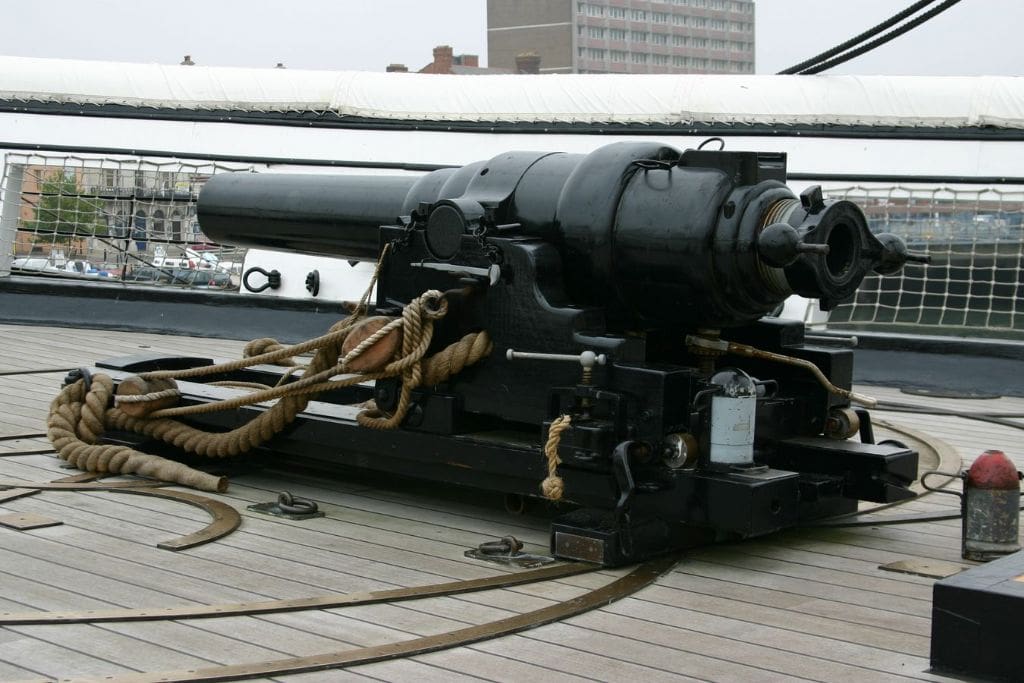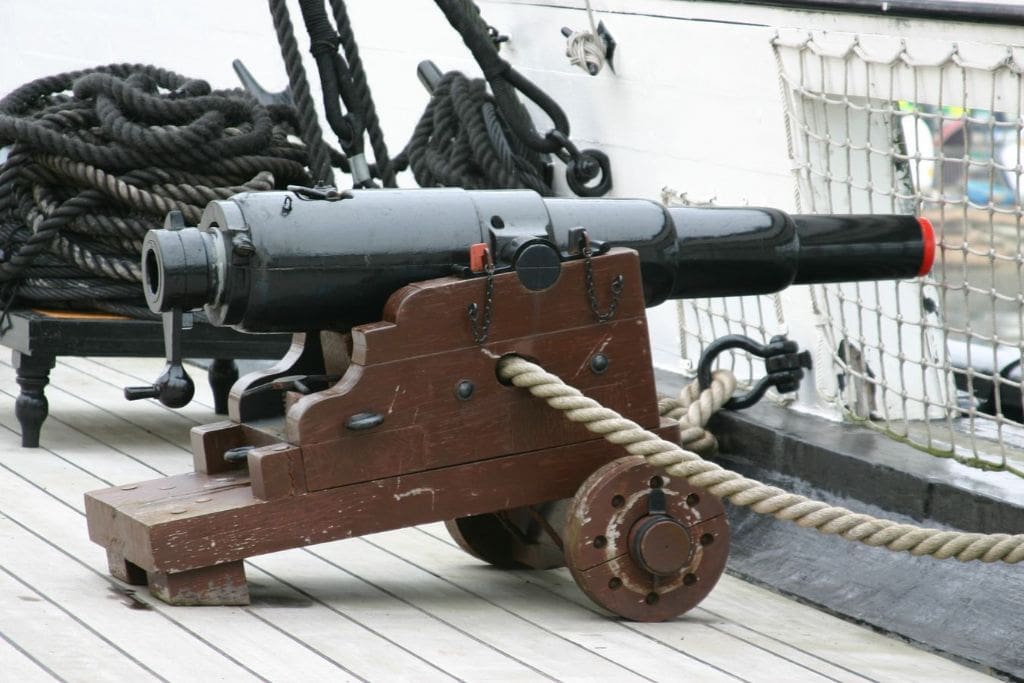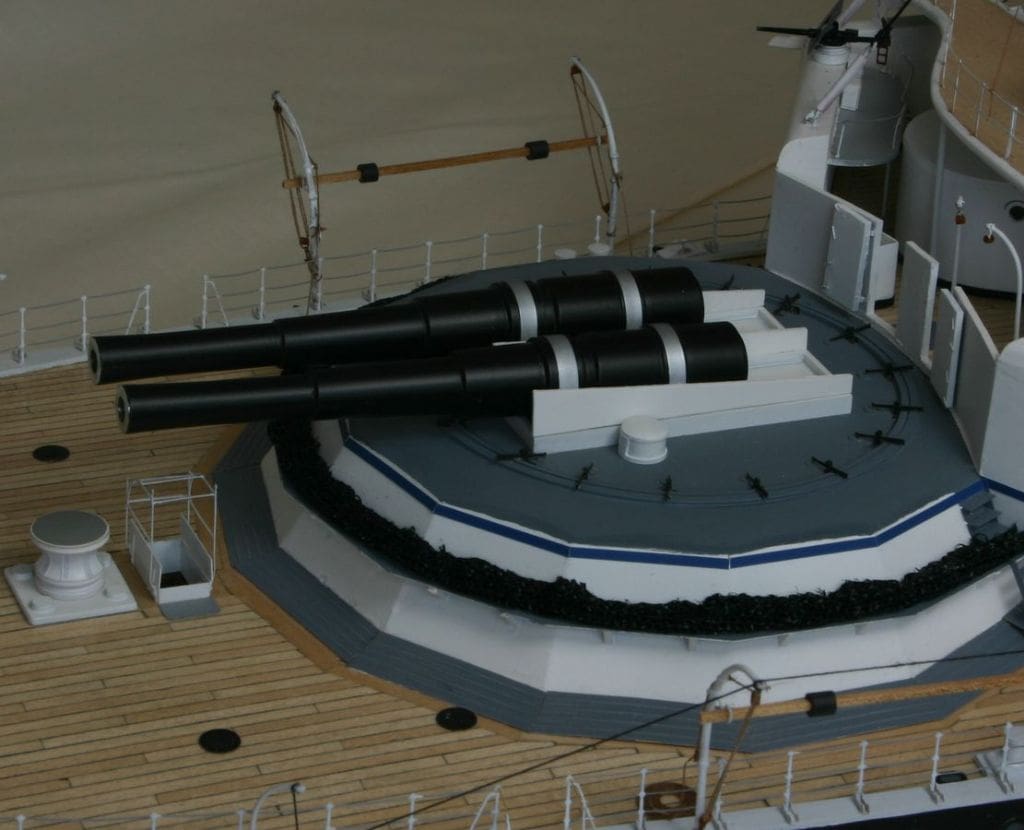BRIAN KING fires us up!




If you build ship models as I do, sooner or later you will have to build guns. In a 1000 word article the subject is too great to be covered in any complete manner at all, but perhaps a word or two can be devoted to an examination of gun barrels.
The shape of ship’s large gun barrels changed fairly abruptly in about 1870. The reasons for this were mainly two fold. The gun barrel material was changed from cast iron to steel and the propellent likewise from good old-fashioned gunpowder to slower burning cordite and the like.
Enjoy more Model Boats Magazine reading in the monthly magazine.
Click here to subscribe & save.
Cast iron had been used for centuries, as it was relatively cheap and plentiful. It could also be cast into shape and after the Dutch showed us how, bored out to produce a more accurate bore. However, as a material for resisting the explosive force of discharge it was not good. As any engineer will tell you, cast iron is fine when resisting compressive forces but the charge exploding produces tensile forces, these trying to tear the barrel apart and at this game it is not so good. To make matters worse, gunpowder has a characteristic not aimed at making the gun-maker’s job any easier. When it explodes, the pressure in the gun rises extremely fast, but this pressure decays quickly. This led to the characteristic shape of barrels using gunpowder as shown in Fig. 1, large chases and short barrels. The chase had to be large to accommodate the sharp pressure rise and the relatively weak constructional material. The quick drop in pressure resulted in short barrels, as there is no point in keeping the shell in the barrel after the pressure has dropped because of the wasted energy due to shell/barrel friction. Some attempt was made during the second half of the nineteenth century to reduce the sudden pressure rise. This was first done by modifying the shape of the explosive. Gunpowder in finely divided form has an enormous surface area exposed to flame and can therefore burn very fast. By reducing the area subjected to the flame, combustion could be slowed down. The powder was pressed into blocks and its composition varied a little. In his book ‘British Battleships’, Oscar Parkes gives the names of powders used at the time: Slow Burning Cocoa, Prismatic brown, Prismatic black, Small Pebble and Rifle Large Grain. Further work by Nobel and Abel produced other propellant explosives such as ballistite and cordite. This reduced somewhat the steep pressure rise. To take full advantage of this, the shell needed to be kept in the barrel longer hence the extension of the barrel length seen in about 1870 when ships such as HMS Devastation were re-gunned. From the model-makers perspective this produced a more handsome model. Gun turrets with their gun barrels just peeping out always looked mean. Guns with short barrels made muzzle-loading easier of course and longer barrels hastened the change to breech-loading which had been abandoned after the failure of the Armstrong gun used in HMS Warrior in the 1860s. Figs. 2 and 3 show Armstrong guns on HMS Warrior.
This weapon used a wedge system with a hollow breech screw through which the gun was loaded. The wedge breech block was then replaced and the breech screw tightened. It failed due to distortion and cracking of the breech. Once bitten, the RN kept away from breech loading for some time putting us behind our rivals. The sorry state of British gunnery in the last part of the 19th Century and even up to the battle of Jutland need not be expanded here, but the long period of no big gun battles had bred a dreadful apathy in RN gun circles. Stories abound about gun ammunition being thrown over the side. The way to promotion was smartness, pristine paintwork and crew. Gunnery was not mentioned in Admiral’s reports. The raison d’etre in the first place for the warships had been forgotten! Gun practice meant blistered paint and that meant more money from the officer’s pockets to repair the damage and to preserve smartness.
Incidentally perhaps, distinction must be made between propellant explosive and high explosive. The former is used to propel the missile and the latter in the shell, to cause maximum damage. Hence the authors who write about the smell of cordite after a shell or bomb burst are really talking rubbish. Put high explosive in the breech of a gun and you will need to order another gun – not to mention the crew.
The model maker needs to copy the shape of the barrel, whatever the era, with great care as they often give the model its characteristic feature. For instance the very heavy muzzle swell seen on cast iron cannon has gone, only to be replaced by very little swell on some modern weapons. On others the shape is very subtle and not always easy to copy, but nevertheless it is important.
We did mention the use of steel as a material for barrels early on, but steel as opposed to cast iron and wrought iron, was not made in any quantities until the 1850s after the work of Bessemer and Siemens who both patented steel making methods. Steel is better at withstanding tensile loads which removes the necessity of large chases and longer barrels were no problem. Fig. 4 shows the shape of gun barrels on my model of HMS Camperdown 1885. The difference between Fig. 1 (start of 19th Century) and Fig. 4 (at the end of the 19th Century) shows the progress from cast iron to steel and the use of improved propellant explosives.



